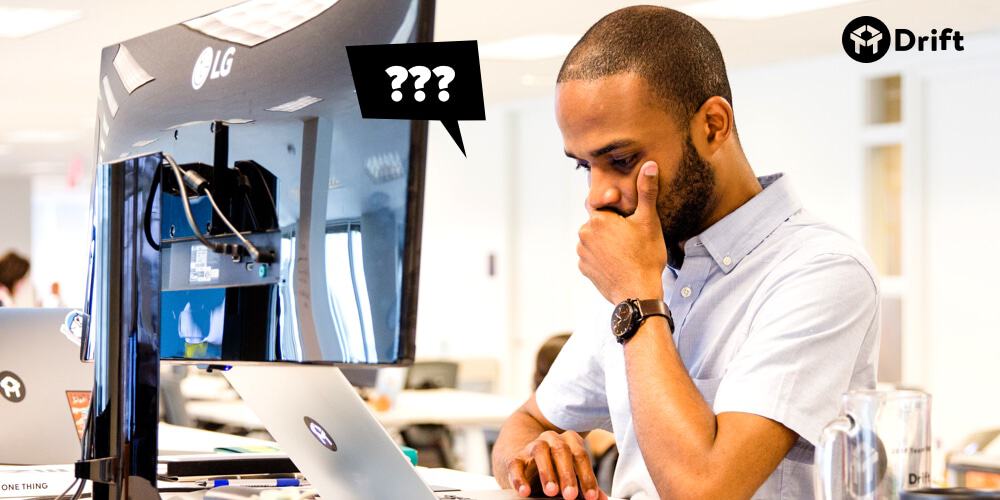
Let’s go back…ten years back. You’re on Comcast’s website and you need to change your credit card or troubleshoot a problem. What do you do? You open up the chat widget on their site and start talking to a support rep.
But chat in this scenario served merely as a portal – a way to talk with someone one to one. Chat gained momentum early on because it was cost effective and quick. One person in a call center can have one phone call at a time. One chat agent in a “call” center can have three chats at a time.
It was a simple cost ROI. There was no intelligence, there was no routing, there was no AI – chatbots as we know them today didn’t exist.
My point? Chat has been around for a long time. Drift didn’t invent it. We aren’t the first and we don’t claim to be. But we’ve taken what chat was – merely a support tool – and pushed it to do so much more.
This is our mission – we’re the new way for businesses to buy from businesses.
We’re changing the perception of chat. We believe messaging should be used to drive revenue. It should be used to make sales. It should be used to build brand awareness. Chat, when done right, allows you to interact with prospects and customers in a more meaningful, more human way.
And the reason behind what we’re doing? A massive shift in buyer behavior. Chat providers like Facebook, WhatsApp, WeChat and Line went from 0 to a billion users in less than five years.
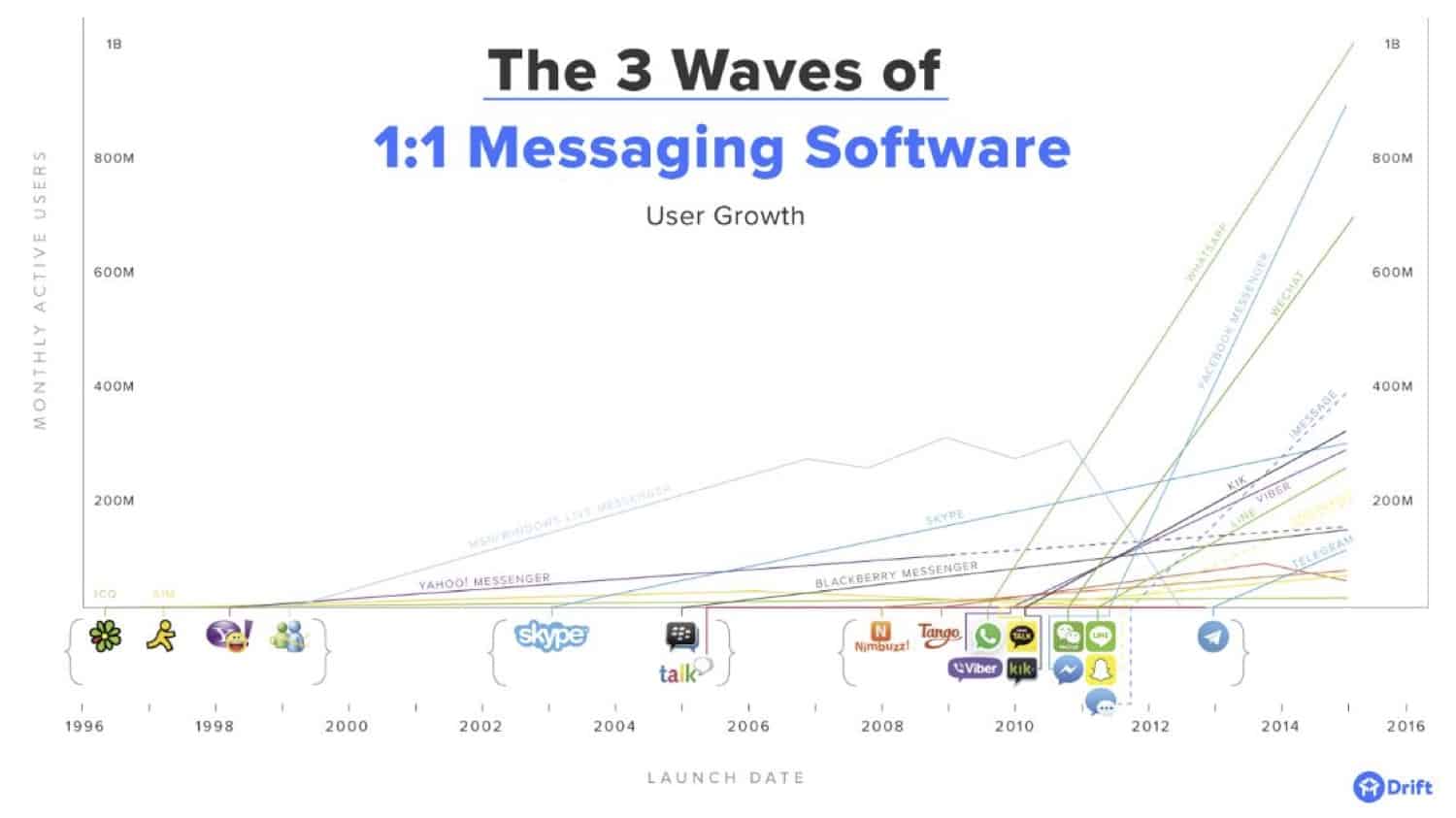
As this was happening, the power was shifting from seller to buyer. Amazon ate Borders. Netflix beat Blockbuster. All because these technologies worked in the background to offer users, consumers, buyers a better experience. They were able to capture demand. The movies on Netflix and the books on Amazon are no different from what Blockbuster or Borders were selling. Netflix and Amazon won because they were smart, convenient, and they offered scale that wasn’t previously possible.
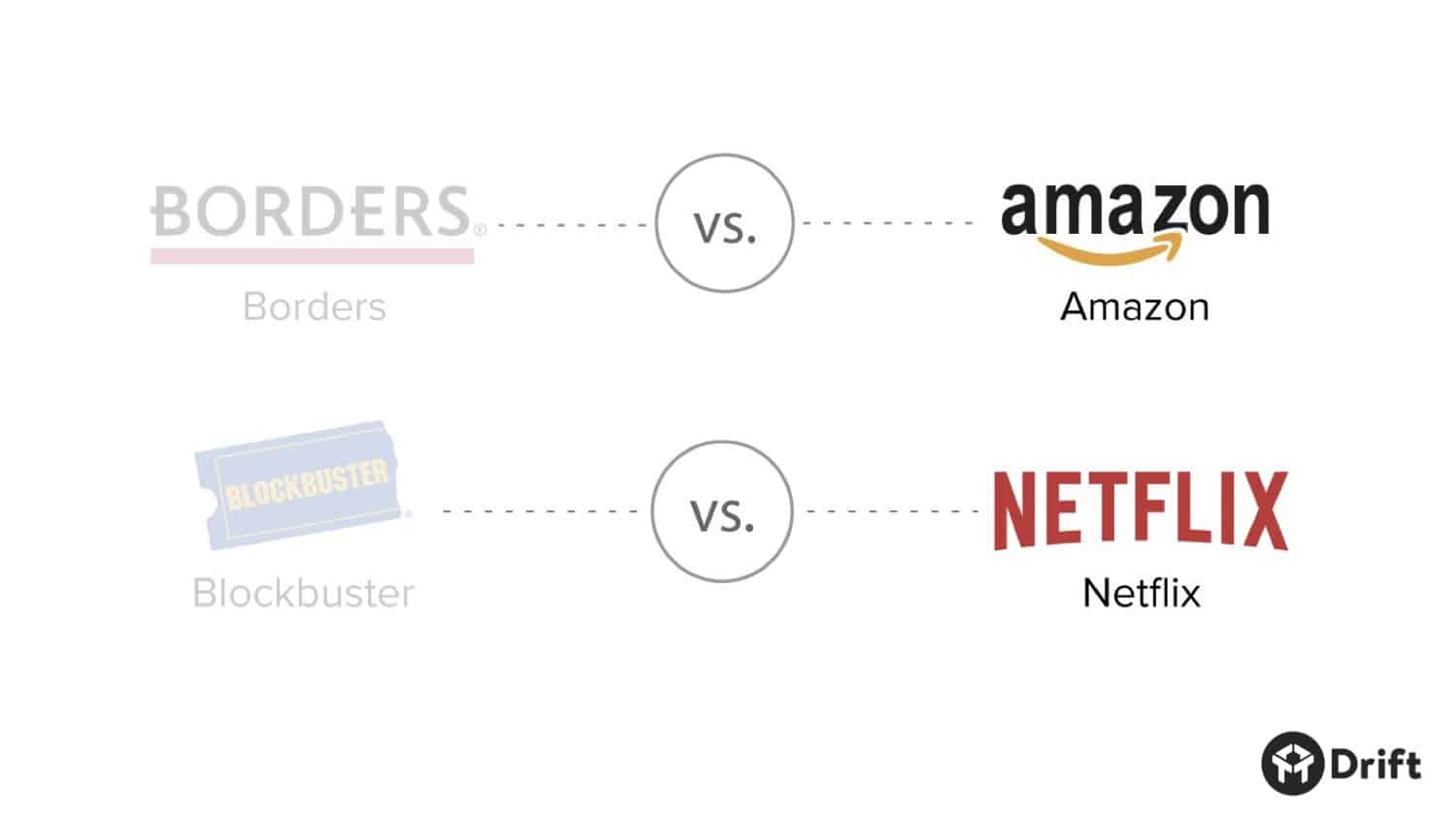
I could go on and on. Take Uber or Lyft over cabs. Or Airbnb over hotels. All of these new aged services provide buyer focused experiences.
This same phenomenon – new, buyer friendly tools replacing old, clunky software – is happening across the marketing and sales landscape.
User experience, buying experience, they all matter. And if you’re not providing a delightful experience, your customer is going to go somewhere else.
Many of the most widely used marketing and sales tools are company, not customer focused. They aim to solve a company problem. Not a customer problem.
But on the consumer side…
We get to use sites like Amazon. With one click we can buy anything we want and it’s delivered the next day. This is what B2B software providers are competing against.
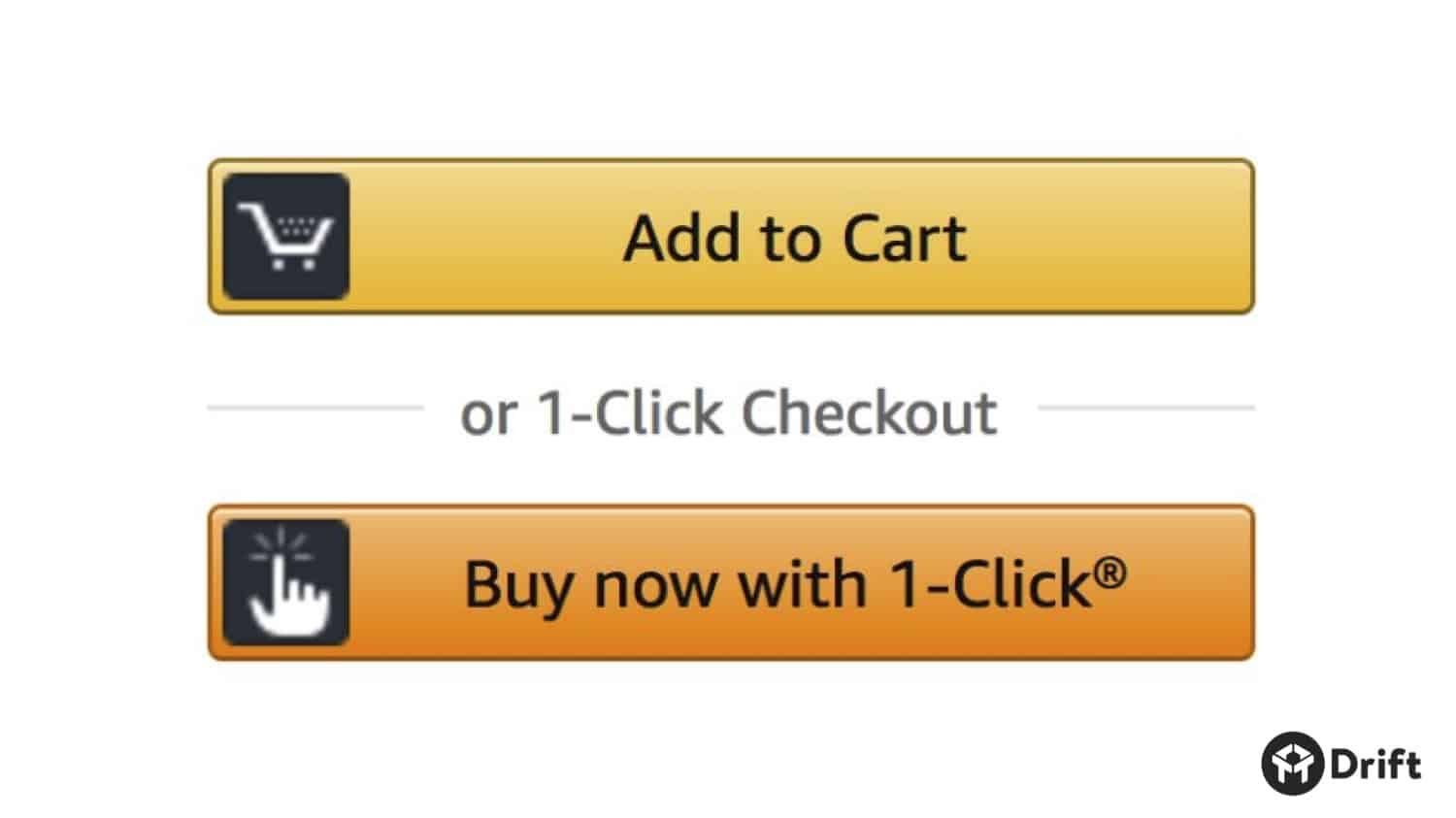
On the B2B side, you ask a site visitor to fill out a form to become a lead in your CRM. Then they get like 50 nurturing emails…until someone finally decides they’re qualified by some arbitrary process. THEN and only then do you finally get to talk to a human (if you’re lucky).
To put this into context, it took me 1 month to buy from Salesforce. I showed up, credit card in hand, ready to buy. I’ve implemented it a few times at other companies so I knew what I was looking for. I land on their site, I fill out their form twice and I never heard back. I actually had to chat in, they routed me to someone in Toronto, Toronto said I’m not your rep, I’m going to push you to New York. I got to a rep in New York, and then they wanted to have a qualifying call, and then another technical call.
That’s crazy.
You know what else is crazy? We spend $45 billion to send people to forms!

Source: AMI Partners data, 2014 and HubSpot Estimates
Imagine you had this same experience at the Apple store. The company just spent millions of dollars building the store. All the products are laid out – they look great. There are descriptions, people can come in and try them, and literally no one is in there. There’s no cash register, there’s no one in a blue shirt to help you. That is the equivalent of what we do in B2B today. And this is what the B2B buyer has come to expect.
But we expect so much more from Apple. We walk in and someone HELPS us! “Oh, you’re looking for a watch, come over here. Can I help you buy that? Let me show you how to use the product. Let me teach you how to use your Mac.”
☝That’s the experience we all know and love, but it’s not the experience we’re getting on the B2B side.
I’ll say it again: we spend about $45 billion to get people to our forms in B2B, and the average conversion rate is 2%, which means that 98% of the traffic we just paid for is wasted. Essentially, of 100 people who walk into the store, 98 walk out.
And it’s this problem that we’re ultimately trying to solve at Drift.
Below are the results from a study we ran using Mechanical Turk. (You can read the full report here).
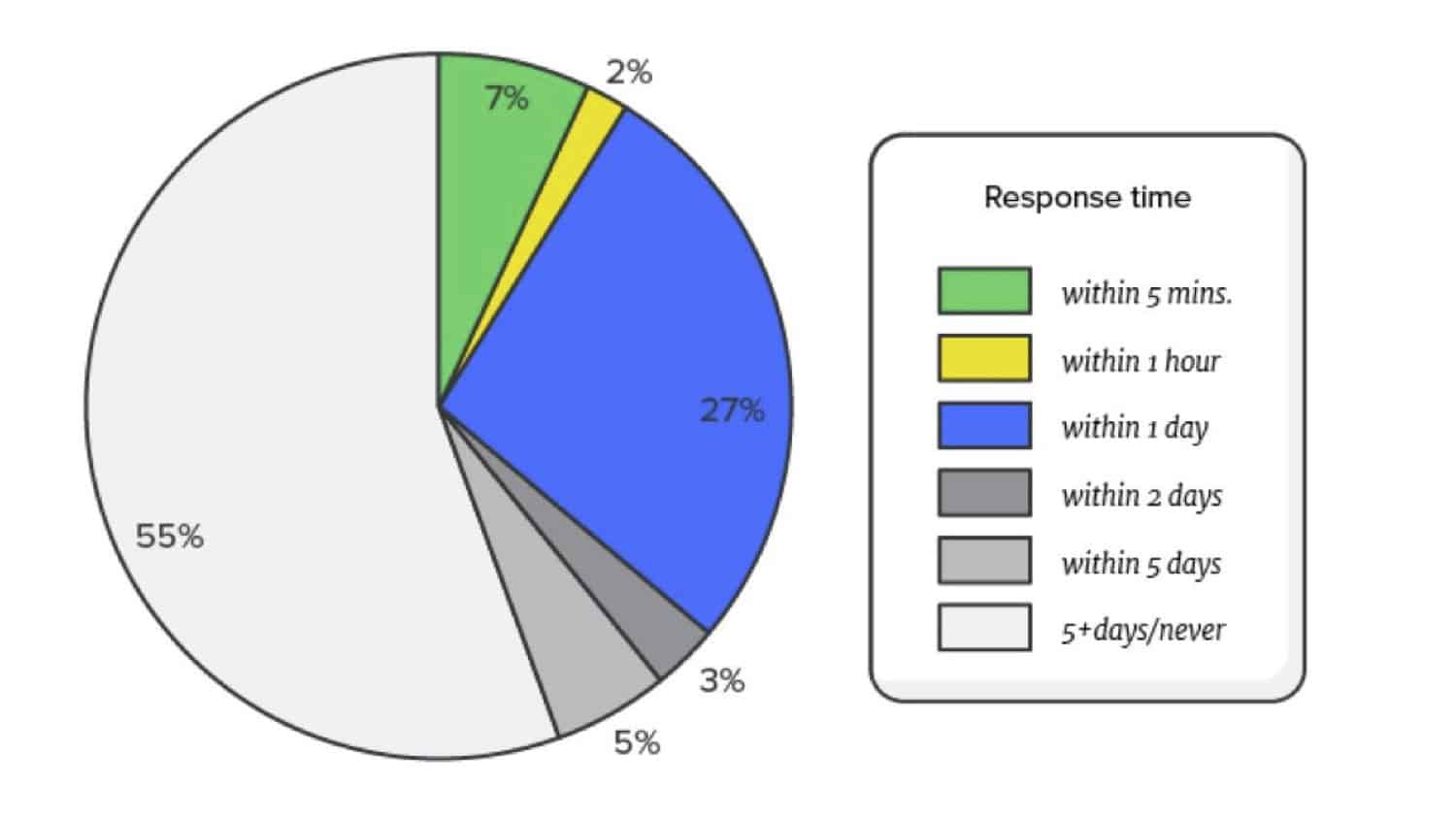
We became leads in about a thousand B2B company funnels. We had people go and fill out these forms, and we timed how fast people got back to us. Only 9% were able to get back to us within an hour, 27% within a day, 55% never even got back to us, which is pretty insane. These are companies that are paying lots of money to get impressions, to get your thoughts, your time – to get you into their store and they won’t even respond when you choose to engage.
Now let’s look at what response rates are like for companies using chatbots.
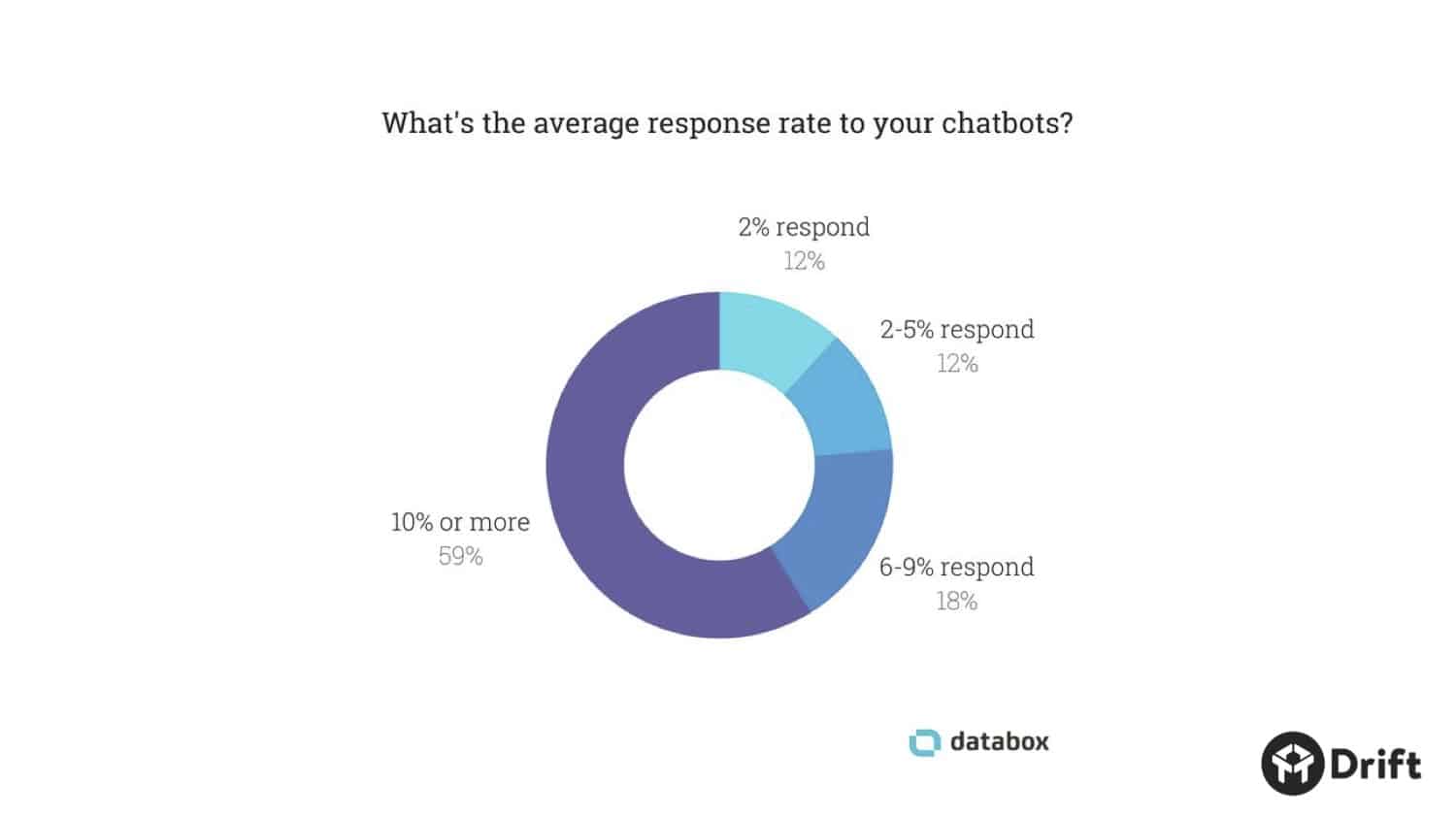
Source: https://databox.com/chatbot-response-rates
59% of marketers report chatbot response rates of 10% or higher from visitors who walk into their store, whereas the average for a form is two.
That’s a +5X increase – pretty meaningful.
As a concept, talking to everyone who comes to your site isn’t super complicated, right? But scaling this is really, really hard. Scaling conversations is hard. Just think about the last time you called your bank…pretty painful, right? Getting to the right person or answer takes several transfers and needless steps.
We know that whoever sits at the end of a phone line likely has other tasks and assignments to get to. They can’t just sit there day in day out and respond to people. We all have meetings, interviews and demos to conduct.
It’s hard to get people to sit on the back end, especially in a B2B company, and field questions that may be coming in through your chat service. That’s why people have been pretty slow to adopt it historically.
But at Drift, we leverage automation and AI to engage with customers.
And the results are real. Conversational marketing drives revenue. Take these examples. At RapidMiner, for instance, chat is now their number one source of leads.
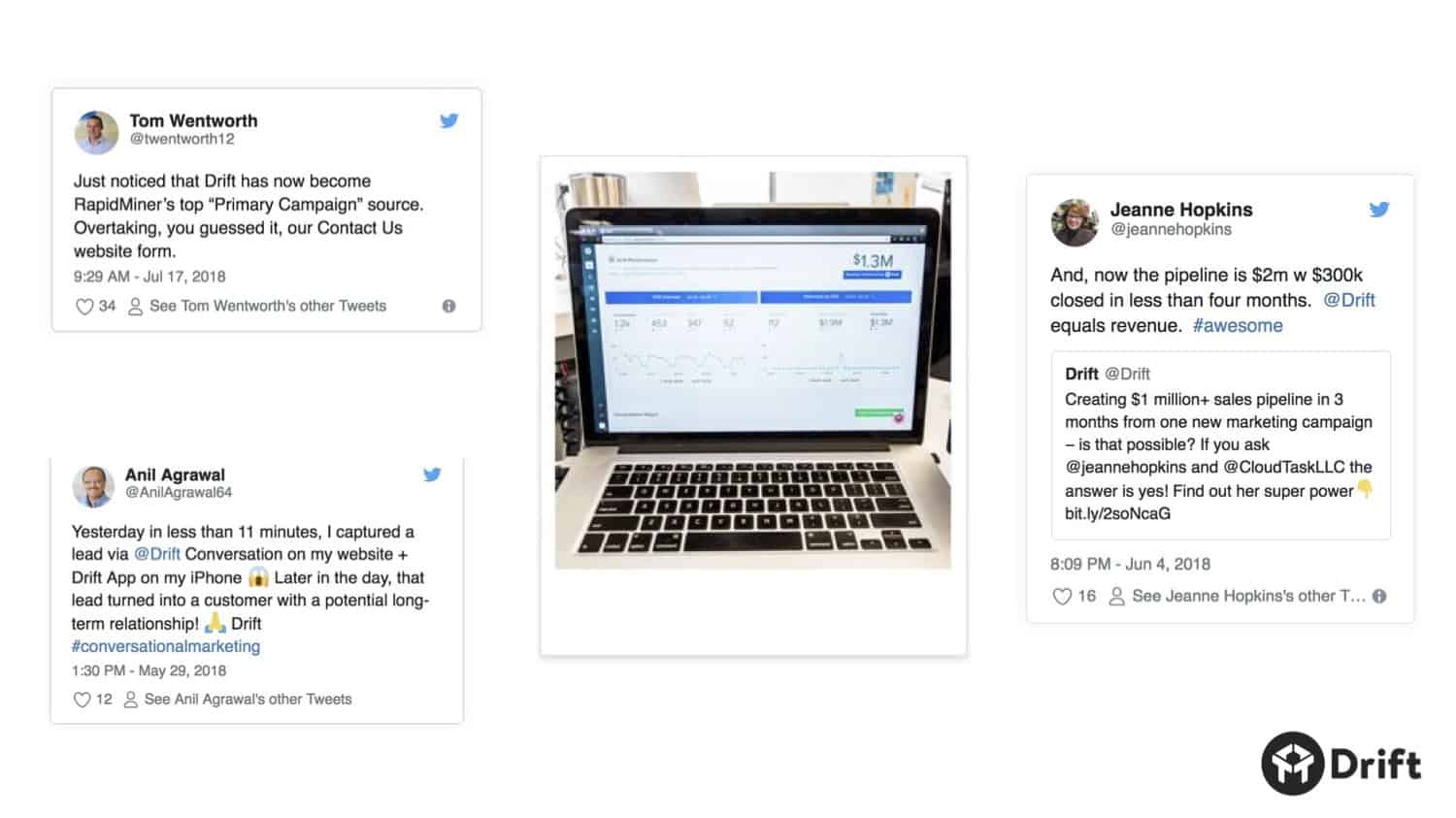
Or look at Ipswich. Drift generated about $2 million worth of pipeline for them in a couple months. And all of this is because reps there are having more conversations. They’re talking to people who walk into their store. And more conversations mean more revenue.
So how do we do this?
Bots of course. Bots can do three things particularly well.
1. Complete tasks for you.
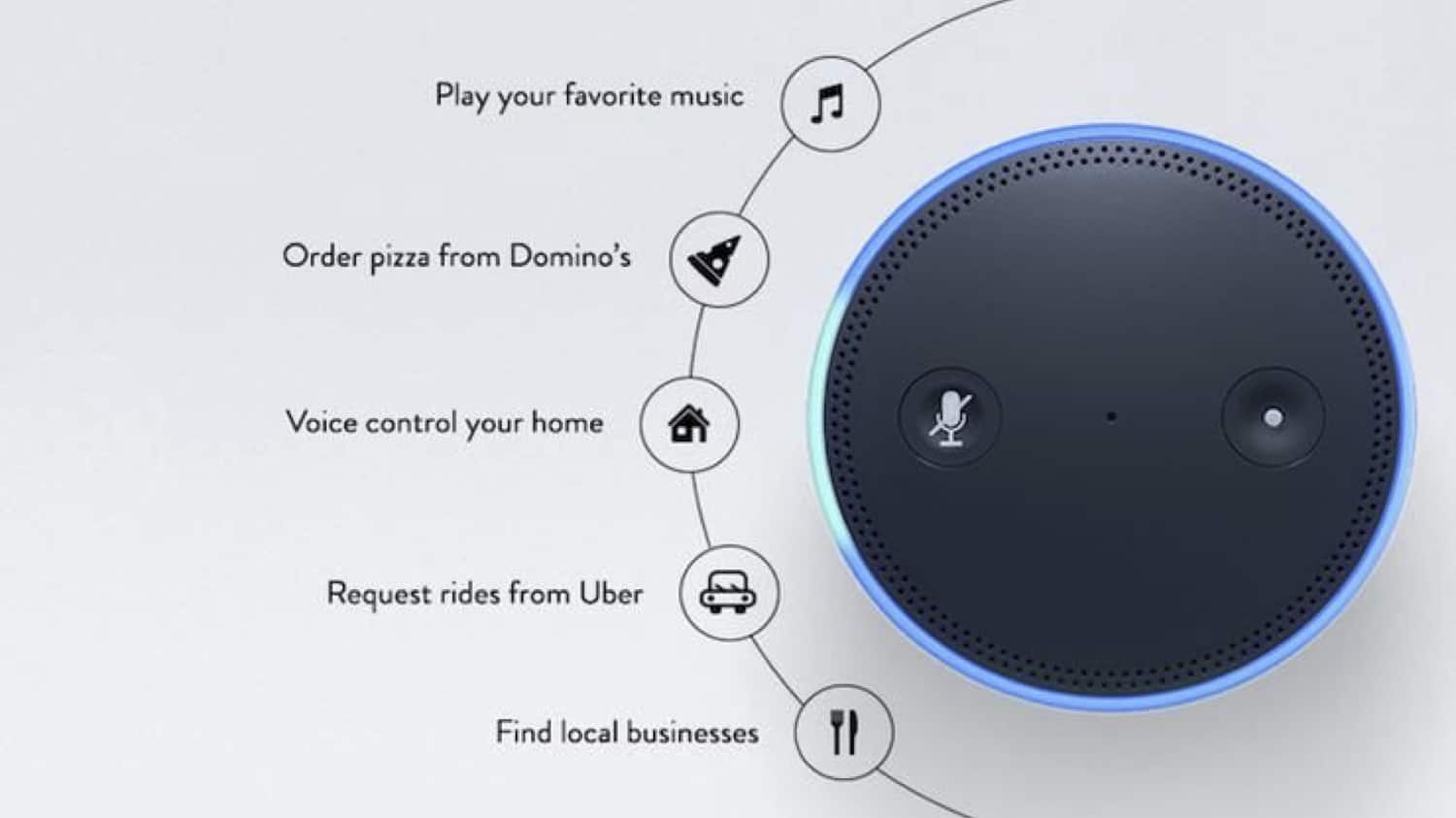
You’re already used to this behavior. How many times did you talk to Alexa or Siri or Google today? Bots play your favorite songs, order pizza for you and get you an Uber. Bots are very good at responding to your commands. They’re convenient, they save you time.
Drift takes a similar approach. You hit a site with Drift installed and a bot pops up to engage you. Depending on your interaction with the bot, it may surface meeting times with available sales rep.
The bot has enough intelligence to figure out who you are and see if you already exist in any systems. If you do, it will route you to the right person. But if it doesn’t know you, you’ll be asked a few clarifying questions to figure out who the right person is for you to meet. There’s a built in intelligence layer to help you complete that task. Just like Siri or Alexa, the bot is getting something done for you in real time, and it’s quick. The hype that IVR never lived up to.
2. Find an answer for you.

How many times have you asked Siri to tell you what song is playing? Siri knows to pass the question to Shazam. Then the data comes back from Shazam and Siri tells you. In a matter of moments. Whatever the question (most of the time), Siri helps you navigate to an answer and finds the content you’re looking for.
Drift works similarly. Think about a website as a treasure trove of content…and if you’ve spent any time on B2B websites, you know they’re not that intuitive. It can be pretty daunting to find your way around. Part of what the bot can do is find the answer for you.
You ask a question and instead of waiting for someone from support to come in and give you the answer, the bot gets it done faster. Because it’s actually ingested all of the content on the site and then uses matching logic to serve up the most relevant items based on your question.
Here’s an example:
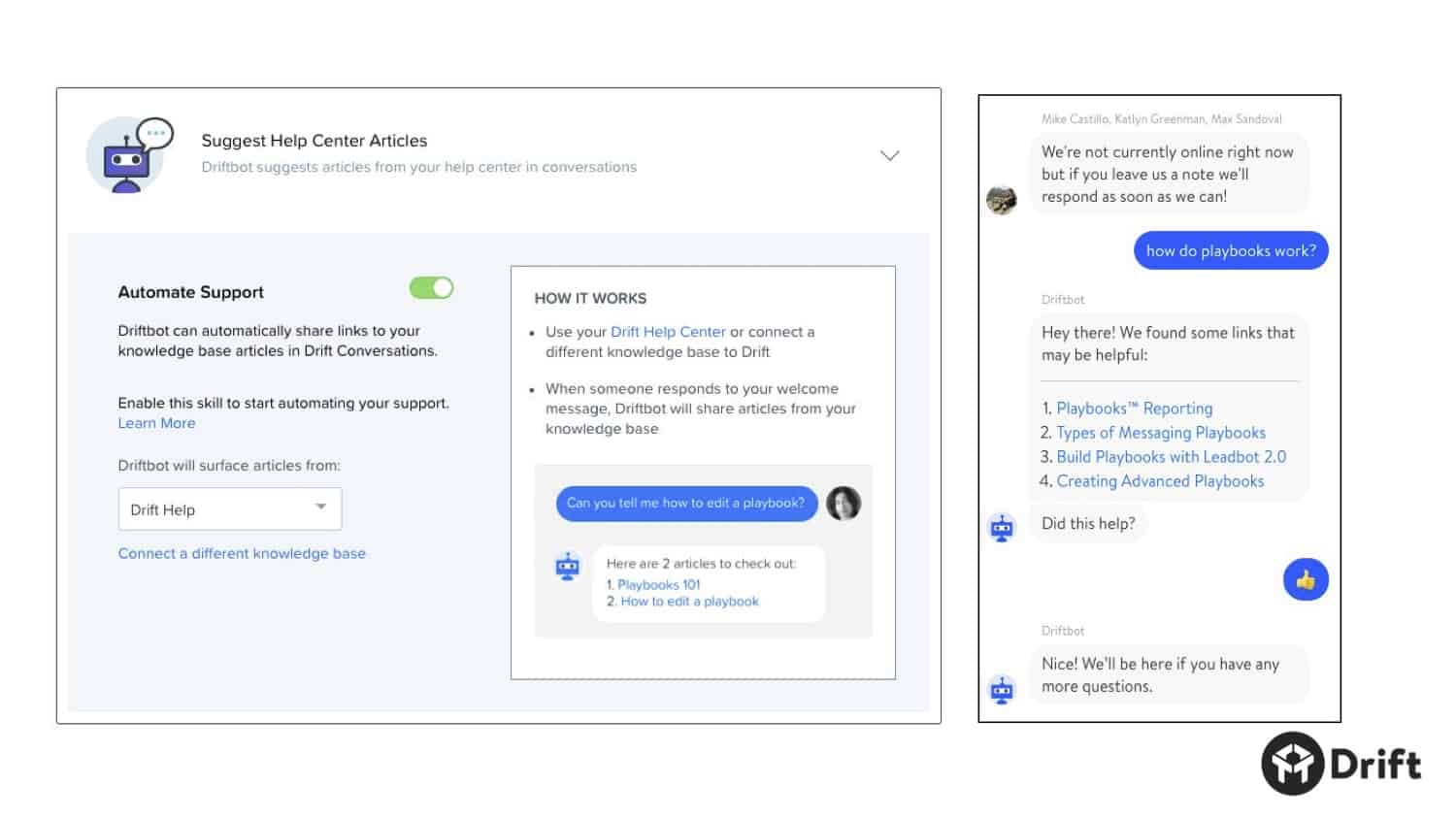
More often than not, the person says “great” and moves on. They’ve got their answer and it’s all automated. Saving your team time.
3. Automate the entire conversation.

This is the holy grail. A bot that can ingest what you’ve said in an intelligent way, break it down, and respond as if you were talking directly to a human. See the Turing Test. Generally we are in the early days here.
At Drift, we have millions of conversations flowing through our platform every day, and we are using those conversations to develop and refine a bot that can have an entire conversation, start to finish, with plenty of loops, on its own.
Today our bots are involved in 90% of our conversations and are able to handle about 30% of those on their own. With more time, data, and tuning we believe that number will increase significantly over the coming months all while (most importantly) enhancing the end customer experience.
One final note – we strongly believe in indicating when you are talking to a bot, so don’t worry, we won’t disguise a bot as a human on our site.
Want more on the strategic value of Conversational Marketing? Watch the video below.





